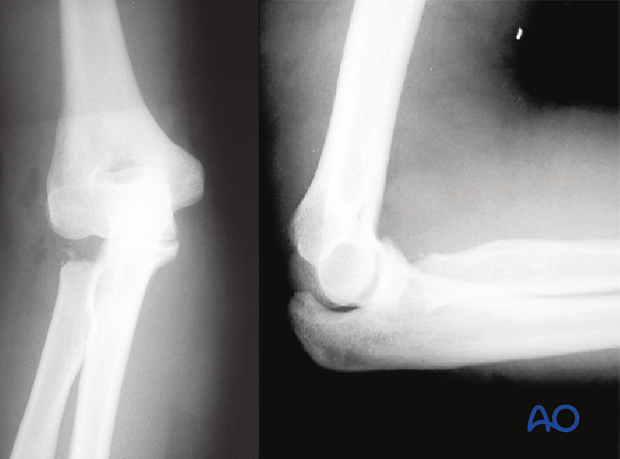Radial head excision
1. Introduction
In unreconstructable radial head fractures, the excision is indicated:
- in isolated radial head fracture
- in low energy fracture
- in radial head fracture without associated fracture or ligament injury
Radial head excision can produce instability of elbow or forearm (Essex-Lopresti lesion). Thus, it is contraindicated when the elbow joint is unstable (eg, coronoid fracture and / or collateral ligament rupture), or when the interosseous membrane and DRUJ have been injured.
2. Positioning and approach
Positioning
This procedure is normally performed with the patient in a supine position for lateral access.
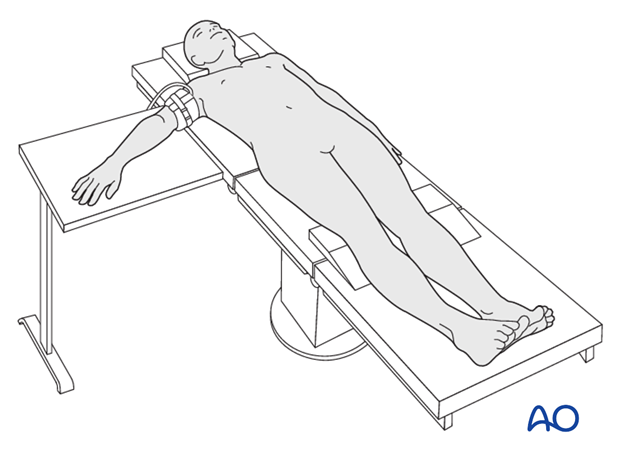
Approach
For this procedure a lateral approach is normally used.
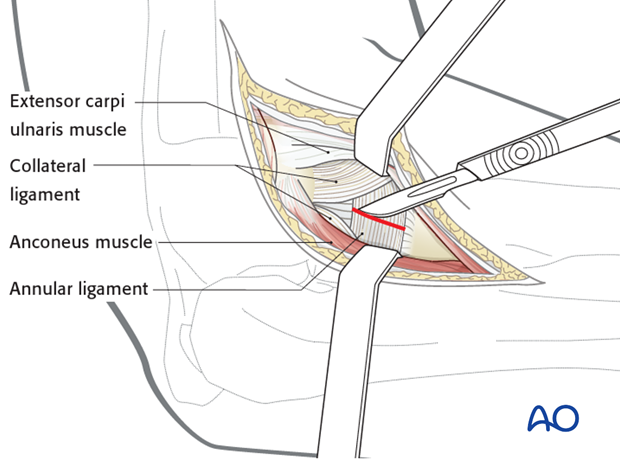
3. Resection of the radial head
Remove radial head fragments
Carefully remove all radial head fragments without further damage to the annular ligament.
Pearl: Reconstruct the radial head on a side-table to make sure that all fragments have been removed from the joint.
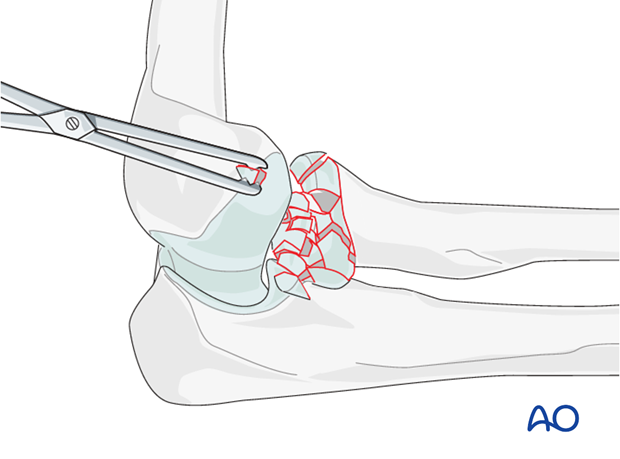
Smoothing the radial neck edges
Smoothen the radial neck edges with the help of a small rongeur.
Do not unnecessarily further resect the neck.
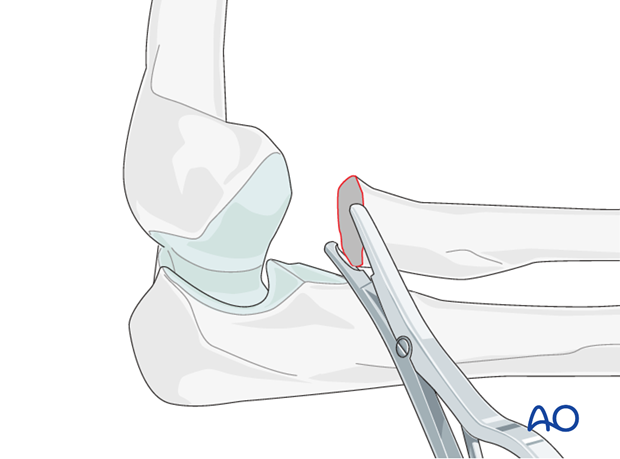
4. Final intraoperative assessment
If the annular ligament is ruptured, repair it with non-absorbable sutures. Check elbow range of motion in flexion, extension, pronation and supination. Check elbow stability.
Intraoperative C-arm evaluation is advisable to look for remaining fragments and alignment (as shown in the X-ray).
Also check the wrist with a C-arm and compare to the contralateral side to rule out radial shortening. If this is present it should be corrected with a radial head prosthesis.
